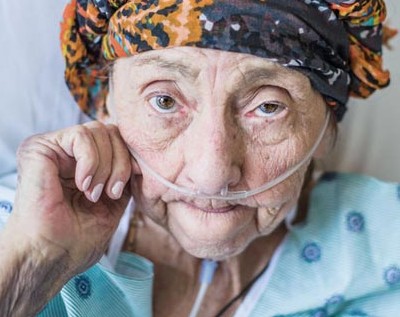Care Coordination and Hospice: A Cornerstone of Person-Centered Care
We have apps and software to manage it, new models of care and payment to encourage it across all levels of the care continuum, innovative ways to measure its success, and new penalties when providers or organizations fail to deliver it.
Care coordination has been at the foundation of hospice care since it was signed into US law in 1982.
Defining Care Coordination
There are differing opinions of what constitutes care coordination, with a commonly accepted definition being:
Care coordination is the deliberate organization of patient care activities between two or more participants (including the patient) involved in a patient's care to facilitate the appropriate delivery of healthcare services. Organizing care involves the marshalling of personnel and other resources needed to carry out all required patient care activities and is often managed by the exchange of information among participants responsible for different aspects of care.
In addition to delivering care that is appropriate, coordinated care should also closely align with the care goals and wishes of the individual and his or her family.
Care Transitions Near the End of Life
About a third of Medicare beneficiaries had four or more transitions within their last 6 months of life.1 For instance, prior to choosing hospice care, patients may transition from an ICU to a skilled nursing facility or spend years going from specialist to specialist, becoming hospitalized for exacerbations only to return to a healthcare plateau and a false sense of functional stability.
Hospice care providers serve as a single entity responsible for ensuring the coordinated care of such patients. This means the hospice care provider is accountable for:
- Sharing information with patients’ attending physicians
- Keeping patients and families informed
- Managing timely transitions between care settings
- Providing the right care in the right place at the right time
The Challenges: Transitions and Complexity
All patients are at risk when they transition—between providers or insurance companies, out of the hospital, or onto a new prescription.
Patients with advanced illness are even more vulnerable. Among Medicare patients, approximately 2.3 million seniors are readmitted within 30 days due to complications, at an average cost of $15,500 per patient. (Agency for Healthcare Research and Quality [AHRQ], 2018)
The complexity of these patients’ care can be addressed with enhanced care coordination. They may have multiple chronic or acute health problems. They may see multiple health care professionals in multiple locations and associated with several health systems. They may be unable to organize their own care, from keeping appointments to buying and taking prescribed medications. They may also face social challenges, from isolation to financial hardship.
These patients’ attending physicians once primarily coordinated their care, but with more complications comes an increasing need for a care team that proactively coordinates care on a patient-by-patient basis.
This is where the hospice care model’s interdisciplinary team steps in to coordinate support based on the patient’s individualized plan of care. As patients move from conventional to supportive care—often from ineffective, overly intensive, and costly care to patient goal focused comfort care; from disease-focused care to person-centered care—hospice addresses their specific needs while preventing unnecessary, burdensome hospital visits and admissions.
Benefits to Care Coordination within Hospice
There is a great value in physicians and hospice care providers coming together to create a connected care community.
In addition to improving quality of care, this association promotes:
- Timely Referral
- Referring hospice patients sooner frees up treatment time for new patients
- Patients receive the benefits of hospice care sooner, improving their quality of life during their remaining time
- Shared Decision-Making
- When a team of clinicians take part in the transition decision, patients are reassured that they are making the right decision in turning to hospice care
- Easy Access to Shared Data
- Via technology, physicians can review patient data and gain a more holistic view of the patient’s health trajectory, treatments, and behaviors
The Key is Interoperability
The fragmentation of post-acute care in earlier years has led to a need for care coordination between hospice care providers and physicians. To address this fragmentation, VITAS has adopted technology to facilitate enhanced coordination between hospice care teams and attending physicians.
Specifically, VITAS’ fully mobilized nursing units, supported by IT experts, use leading-edge technology to work in conjunction with attending physicians to provide person-centered care on-the-go. These easy-access, anywhere and anytime tools make it easier to coordinate care between care settings and medical experts.
They also allow the patient’s full team of experts, including nurses, social workers, and other specialists, to view the patient’s care plan and order home medical equipment and prescribed medications as needed.
Bridging the Gap Between Hospice and Attending Physicians
VITAS administers person-centered care by working alongside attending physicians on a patient-by-patient basis.
The increased complications experienced by patients with advanced illness result in an increased need for a care team that proactively coordinates care on a patient-by-patient basis. Hospice should be a top-of-mind recommendation for eligible patients because it provides an interdisciplinary team approach in their preferred setting, incorporating these care approaches:
- Holistic
- Psychosocial
- Educational
Our specialized experts rely on communication, documentation, and devices that allow real-time information sharing, while maintaining respect for one another’s professional expertise to ensure the effective delivery of collaborative healthcare services.
Our goal is to lead safe, effective, comprehensive care and prevent unnecessary, burdensome hospital visits and admissions.
1Wang, S. Y., Aldridge, M. D., Gross, C. P., Canavan, M., Cherlin, E., & Bradley, E. (2017). End‐of‐Life care transition patterns of Medicare beneficiaries. Journal of the American Geriatrics Society, 65(7), 1406–1413. https://doi.org/10.1111/jgs.14891
Upcoming Webinars for Healthcare Professionals

Check Hospice Guidelines
Get diagnosis-specific guidelines in our hospice eligibility reference guide.
Hospice Guidelines by Diagnosis Refer Your Patient
